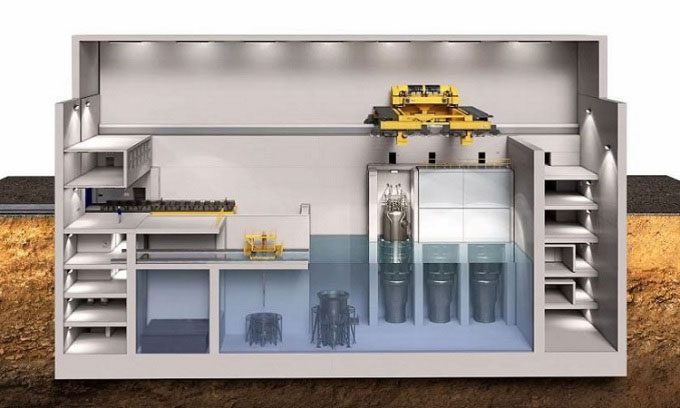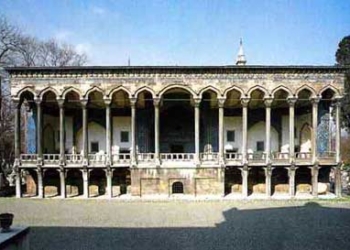The U.S. Nuclear Regulatory Commission (NRC) has granted a license for the first small modular reactor (SMR) to begin operations, providing a safe, clean, and cost-effective energy source.

Simulation of a small modular reactor placed in a containment pool. (Photo: NuScale)
On July 29, the NRC announced that it had approved the reactor design from Oregon-based company NuScale for use in the United States. This is the seventh design approved since the NRC was established in 1974, marking a technological wave aimed at making nuclear power cheaper, easier to install, and safer to operate.
The key advantages of SMR technology lie in its small size and modular design. Instead of building reactors on-site and customizing them to fit the location, NuScale can mass-produce lightweight reactor modules in a factory, then transport them around the world for relatively quick and easy installation.
Each cylindrical module stands 20 meters tall and has a diameter of 2.7 meters, generating 77 MW by pushing steam through a turbine. A power plant can operate with 4 to 12 modules submerged in a water pool, resulting in a total capacity of approximately 308 to 924 MW. NuScale states that mass production will make SMRs more cost-competitive compared to fossil fuels.
Like most other next-generation nuclear reactors, SMRs are designed to safely shut down in the event of an emergency. Water and steam release valves will close during emergencies. A secondary valve system will open to relieve pressure from the reactor core into the containment vessel. As the steam condenses, it will be returned to the core and circulated again. NuScale has indicated that the reactors will be housed in a massive water pool with a concrete roof, providing an ultimate layer of protection against earthquakes and airstrikes.
NuScale’s first power plant is set to begin generating electricity in 2029, with all six modules operational by 2030. Located at the Idaho National Laboratory, the Carbon Free Power project will provide approximately 462 MW of electricity.





















































